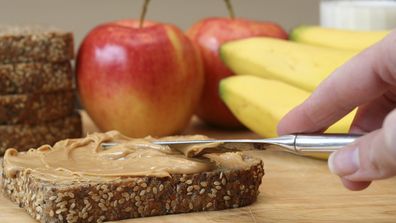At the start of a new school week, it is safe to say nothing will incur the wrath of overwhelmed parents to a greater extent than a poorly-executed public health message warning of the dangers of school sandwich fillings.
Especially when the alternatives offered include a Mediterranean vegetable pita or a Turkey, avocado and apple crepe. Let’s be honest, most adults do not have this much time (or money) to invest in their own lunch, let alone when making a packed lunch (that will actually be eaten) for a number of small children.
In the interest of public health, though, let’s cut to the chase – should ham, and processed meats in general, be banned?
READ MORE: ‘In defence of the humble ham sandwich’

The World Health Organisation classifies processed meats including salami, sausages, bacon and devon as Grade 1 carcinogens, which means increased consumption is associated with an increased risk of developing cancer, bowel cancer in particular.
There are chemicals in both red and processed meat that can damage the lining of the gut, which can lead to bowel cancer. The preservatives used in processed meat in particular also produce these chemicals.
Like many areas of nutrition, though, the reality is a little bit more complicated.
Not everyone who consumes processed meats will develop bowel cancer. Rather, whether or not individuals develop cancer will depend on a range of other variables including genetics, usual dietary intake, alcohol consumption, among other factors.
READ MORE: ‘Kim’s extreme Met Gala weight loss shouldn’t be applauded’

In the diet of an individual who consumes large portions of red and processed meat, as part of a high-fat diet with minimal fresh food, the risk overall is greater. For someone who consumes a ham sandwich on wholegrain bread each day, along with seven-10 serves of fresh fruit and vegetables and minimal processed foods, the risk is significantly lower.
This is the issue with targeting a single food within a mixed and varied diet.
There is also a big difference in the range of processed meats you can find – some are low in fat, some are nitrate-free and some have much more protein and less sodium.
They are not all and one the same thing, nor something the studies these recommendations are based on differentiate between when making these blanket statements.
This is not to say ham is overly healthy. It is a processed food, it does offer a lot less protein than other protein-rich, less processed foods, such as tuna or eggs, and it is extremely high in sodium. As such, like many processed foods, it is best to be consumed in moderation as opposed to as a daily choice of sandwich filling.
Even better would be to focus on improving the quality of the lunchbox contents in general, with better quality wholegrain bread, more fresh fruits and vegetables and less processed snack food.
READ MORE: Human Nature star shares secret to his 23-year marriage

In this context, a couple of slices of ham a couple of times each week is less cause for concern. Indeed, no paediatric dietitian who is also a parent is naïve enough to think Moroccan cauliflower sandwiches are going to cut it with the average child.
So where does that leave us? Do you need to stop buying ham?
The best advice is to mix up the sandwich fillings where you can, and where possible remember that whole protein foods, such as leftover chicken breast, eggs, tuna or salmon, are better options. Including processed meat in the sandwich that is lean and salt reduced occasionally only is likely better for our health long-term, as is increasing vegetable consumption and choosing better quality bread.
Even better, let’s use public health messaging to target the manufacturers of processed meats to make better products that are lower in salt, preservative-free and to create innovative products that are better for everyone’s health.
That is where the energy of public health organisations is much better spent and leave the consumer messaging to the clinicians who are much more familiar with the daily stressors the average family is dealing with, especially in relation to packing an appealing and nutritious school lunchbox.
For a daily dose of 9Honey, subscribe to our newsletter here
Author Susie Burrell is a leading Australian dietitian and nutritionist, founder of Shape Me, co-host of The Nutrition Couch podcast and prominent media spokesperson, with regular appearances in both print and television media commenting on all areas of diet, weight loss and nutrition.
